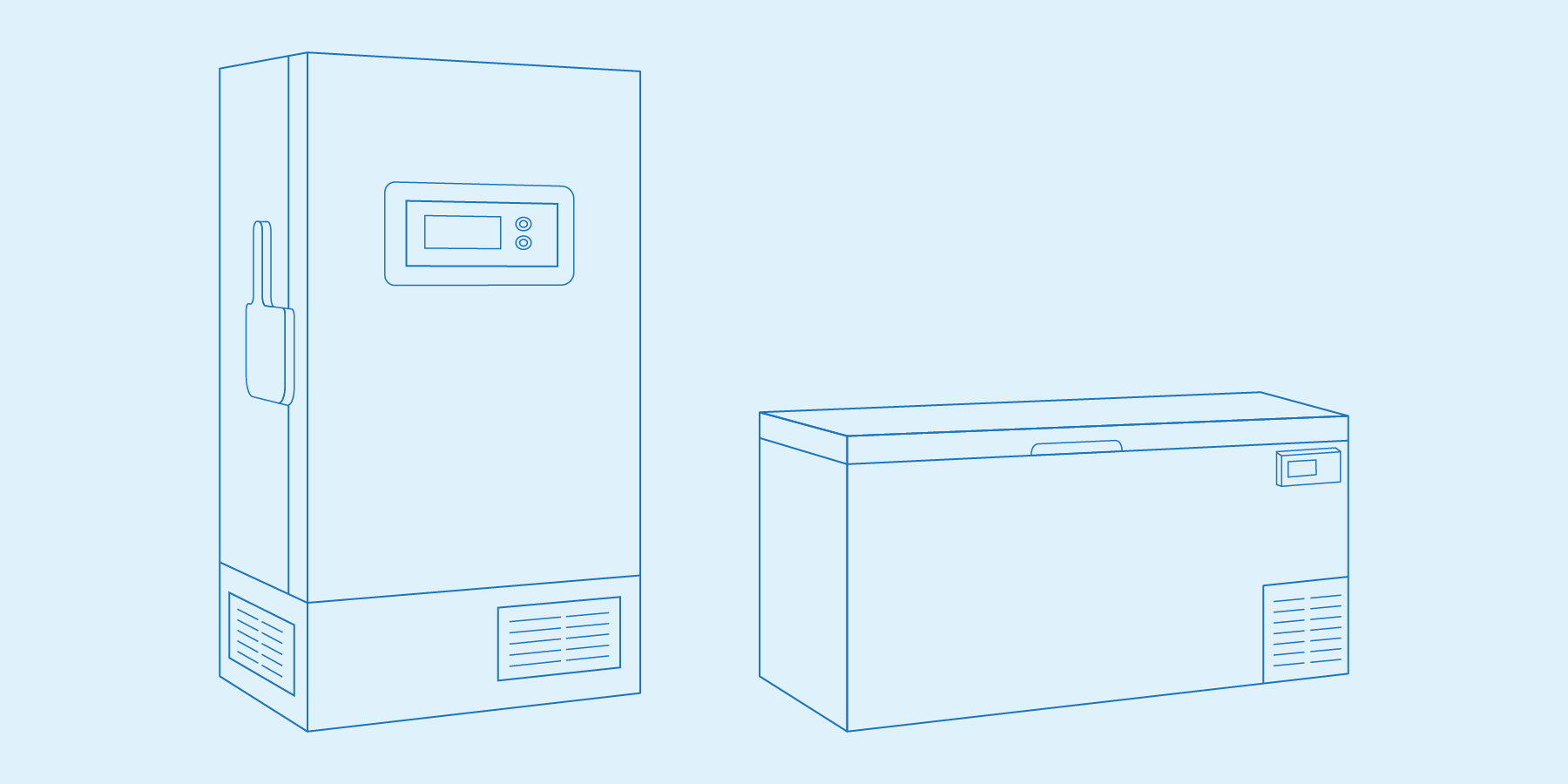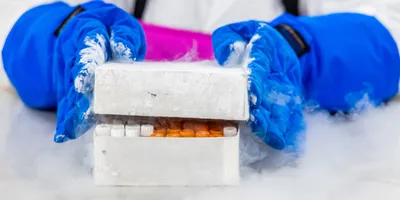
With current COVID-19 vaccines needing to be stored at very cold temperatures to maintain their effectiveness, ultralow temperature (ULT) freezers have never been a hotter topic. Now a month into vaccination campaigns worldwide, we have already seen how important maintaining an effective cold supply chain has been in ensuring vaccines get to their destinations safely and securely. Given the recent increased importance of ultralow cold storage, this Big Picture series dives into the basics of this key laboratory technology, how to choose and maintain ULT freezers, and the role of ULT cold storage in effective COVID-19 vaccine distribution.
What is ultralow cold storage?

ULT cold storage refers to freezers used mainly in the life sciences and clinical labs to store critical samples for long periods of time. While the standard household freezer can provide temperatures as cold as -20°C, ULT freezers offer temperatures between -40 to -80°C (-40°F to -123°F). Like regular freezers, ULT freezers come in chest and upright formats. Key applications include:
- Vaccine storage
- Storage for biomolecules
- Storage for products for medical procedures, including bone marrow, blood, and blood components
- Storage for biospecimens such as brain samples
How do ultralow freezers work?
Many ULT freezers achieve their low temperatures through a cascade refrigeration system. While most regular and low temperature freezers make use of just one compressor to achieve their coldest temperatures, ULT freezers have a second compressor to get down to -80°C or colder. The refrigerants used are also a key part of how ULT freezers work. You can find more details in our in-depth article here.
How much do ultralow freezers cost?

ULT freezers are certainly not cheap, with the initial capital cost of a brand-new freezer ranging from $12,000-40,000 USD, depending on the size and dimensions of the unit and which features you opt for, while used options can be found for around $4,000-7,000 USD. Given the energy demands of achieving such low temperatures, in spite of the greater energy efficiency of modern ULTs, each can cost around $480 USD per year to run, depending on its size, what is stored in the unit, how it’s used, and the environment it’s kept in.
How are ultralow freezers transported?
Given their size, ULT freezers are not easy to transport, requiring large trucks to get to their final destination and either mechanical lifts or plenty of manpower to unpack and unload once they arrive. This makes it especially important for lab staff to come up with a plan before their new ULT freezer gets to the lab. According to a document Thermo Fisher Scientific has been sending to its ULT users, there are several things to consider before the freezer arrives:
- Have a plan for how the ULT freezer will get to its location in the lab or facility (this is especially important if the freezer will be on an upper floor)
- Ensure the temperature of the ULT freezer’s final location can be controlled between 15°C-32°C and that the room is adequately ventilated
- Measure hallways, door openings, and ceiling heights in advance to ensure the freezer can fit
- Ensure the ULT freezer is supplied with the proper voltage, from a dedicated outlet
- Make sure your monitoring system is set to go
- If you don’t have a receiving dock at your facility, make sure you have an area set up for unloading
According to Thermo Fisher, once the ULT freezer arrives, it’s always a good idea to carefully inspect the unit and notify the delivery service right away if you notice any damage that may have occurred during shipping. Users will also need to allow quite a bit of time for their ULT freezer to get down to its set temperature. Thermo’s ULTs, for example, typically take eight to 10 hours to get down to their set temperature.
Care and maintenance of ultralow freezers

According to experts, there are a few key steps to looking after your ULT freezer, which will typically last around 10 years if maintained properly:
- Clean the condenser filter and replace when needed
- Vacuum the condenser
- Defrost the freezer on a regular basis
- Read the manual
- If samples are irreplaceable, users may want to purchase a service plan or extended warranty to ensure proper maintenance and reduce downtime
Monitoring systems—available either through third-party companies or the freezer’s original manufacturer—are an option for many new ULT freezers that will let users know if something goes wrong to prevent the loss of critical samples. For example, if the temperature rises above the freezer’s setpoint or a door is left ajar, alarms will sound and the user or facility manager will receive an email, text, or phone call about the issue so it can be addressed quickly.
Find more on ULT maintenance and monitoring systems here.
The latest in ultralow freezers for the laboratory

Apart from the monitoring systems mentioned above, today’s ULT freezers include a number of advancements over older models such as:
- Increased energy efficiency and, thus, lower cost to operate
- Environmentally-friendly refrigerants
- Advanced alarms and data logging systems
- Backup cooling systems in case of power failure
- More advanced insulation
- Reduced noise
- Easier maintenance
What to consider when choosing a ULT freezer
While budget and application are the two most important factors to consider when selecting which ULT freezer is best for your lab, there are a number of other considerations, including:
- Capacity
- Physical footprint
- Energy efficiency
- Temperature uniformity
- Backup cooling
- Noise
- User interface
- Monitoring approach
Green practices for operating ULT freezers
Due to the amount of energy ULTs require to get down to such cold temperatures, they have a significant impact on a lab’s environmental footprint. According to My Green Lab, an organization dedicated to increasing the environmental sustainability of laboratories, there are a few ways lab staff can decrease the environmental impact of their ULT freezers:
- Use high density storage containers for samples to maximize existing space
- Make sure you have a proper sample inventory system to minimize time spent searching for samples with the freezer door open
- Clean out your freezer regularly to discard items/samples that are no longer needed or viable
- Remove dust and frost from the ULT freezer’s intake and coils
- If you don’t need to run your freezer at the coldest temperatures (-70°C or -80°C), don’t!
Once a product known only to the areas of science that use them, ULT freezers are pieces of technology that the general public is becoming more familiar with, as they will continue to play an essential role in delivering COVID-19 vaccines and helping to bring the current pandemic to an end. It is also expected that future vaccine technology will make use of ULT technology. We hope this web series provides a useful look at the basics of ULT technology as well as some pointers for choosing such a freezer for your lab or facility.
Advanced Lab Management Certificate
The Advanced Lab Management certificate is more than training—it’s a professional advantage.
Gain critical skills and IACET-approved CEUs that make a measurable difference.



